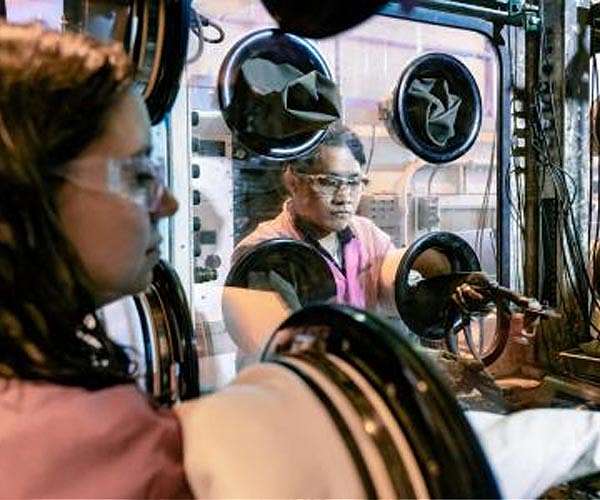Argonne will lead the National Energy Storage Research Hub
The U.S. Department of Energy (DOE) has selected Argonne National Laboratory to lead the newly formed Energy Storage Research Alliance (ESRA), a national hub focused on advancing energy storage technologies. The ESRA, co-led by DOE’s Lawrence Berkeley National Laboratory (Berkeley Lab) and Pacific Northwest National Laboratory (PNNL), is one of two new Energy Innovation Hubs announced by the DOE.
By bringing together nearly 50 leading researchers from three national laboratories and twelve universities, ESRA aims to address the most critical challenges in battery technology, including safety, high energy density and the development of long-term storage solutions using cost-effective and abundant materials. The initiative is intended to push the boundaries of energy storage science, promote innovation and strengthen U.S. competitiveness in this critical area.
“Demand for high-quality, low-cost and sustainable energy storage devices is increasing, especially those with the potential to deeply decarbonize heavy transportation and the power grid,” said Shirley Meng, ESRA director and chief scientist at the Argonne. Collaborating Center for Energy Storage Science. “To achieve this, energy storage technology must achieve unprecedented performance and exceed the capabilities of current lithium-ion technology. The key to making these transformative leaps lies in a robust research and development initiative that is firmly anchored in fundamental science.”
Leveraging decades of investments in fundamental science, ESRA will focus on transformative discoveries in materials chemistry, deeper understanding of electrochemical processes at the atomic level, and laying the scientific foundation needed for major advances in energy storage technology .
“ESRA is creating an ecosystem for energy storage research with the mission to innovate rapidly, shorten the time between fundamental discoveries and technology development, and train the next generation of workforce,” said Bryan McCloskey, ESRA Deputy Director for scientific thrust and faculty engineer at Berkeley. Laboratory.
The success of ESRA’s efforts will lead to the development of high-energy batteries that are fire resistant, capable of providing long-term storage for several days, have a lifespan of decades, and are constructed from inexpensive, widely available materials. .
“ESRA will pave the way for innovative energy storage solutions that advance both US prosperity and security,” said Paul Kearns, president of Argonne. “As the lead laboratory for ESRA under the Department of Energy’s Office of Science, Argonne is proud to lead this collaborative effort that unites leading experts and leverages the impressive scientific resources available at national laboratories and academia.”
The DOE has committed up to $62.5 million in funding for ESRA over the next five years.
In addition to its research objectives, the Argonne-led hub will prioritize training a diverse, next-generation battery workforce to meet future manufacturing needs. This will be achieved through innovative training programs involving partnerships from industry, academia and government.
“Cultivating a diverse workforce committed to securing America’s energy resilience is key to ESRA’s mission,” said Wei Wang, ESRA deputy director for crosscuts and director of the Energy Storage Materials Initiative at PNNL. “Through our strategic equity and inclusion initiatives, we plan to create a robust training ground for energy storage science from undergraduate to postgraduate levels.”
With Berkeley Lab and PNNL as co-leads, the ESRA collaboration brings together extensive expertise across the energy storage spectrum. Their state-of-the-art capabilities in technology discovery, modeling and simulation, and materials synthesis and characterization complement Argonne’s and set the stage for significant advances in energy storage.
Argonne is joined in this initiative by 14 partners, all of whom are deeply involved in ESRA’s scientific efforts, governance, strategic development and training of ESRA’s next generation of battery scientists and engineers. This collaboration between national laboratories and universities is critical to discovering new materials, accelerating technology development and commercializing new innovations in energy storage.


